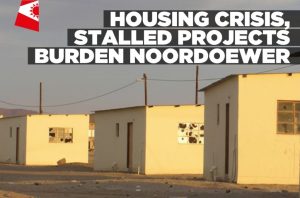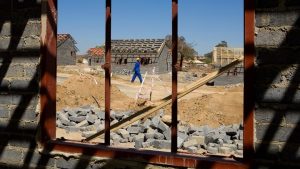This commentary is by Stephen Marshall, a master’s degree candidate in community development and applied economics at the University of Vermont.
Much of the current debate about the affordability of housing centers on the costs of building new housing. This isn’t affordability, this is availability, and the difference is important.
In 1967, a median wage earner could buy the median house for less than a half-year of earnings. In 2021, another median house would cost the Chittenden County median wage earner 6.4 years of wages. (No claim they would compare as equivalent houses.) That works out to 11.5 times the cost, in units of annual income, just for the principal. Others can work out the additional interest that then leaves the budget of the earner and the economy of the state.
Meanwhile, if the rent of the median income renter, who paid $243 for the median-priced apartment in 1980, had inflated at the rate of wages, he or she would be paying $285 per month in 2019 (+$42), but instead was paying $1,213 (+$928). Had that rent inflated at the Consumer Price Index rate of inflation, that home would have cost $742 (+$457) in 2019.

Housing prices have increased in Chittenden County and Burlington much faster than wages or even the Consumer Price Index. No wonder we can’t afford the rent. No wonder so many folks — even working folks — are homeless.
There are more than enough built units in the Vermont market, but 13,000 affordable housing units are needed to house all low income and-or homeless people. (The National Low Income Housing Coalition doesn’t include homeless counts when it calculates the need for housing.)
For every 100 median income earners in Vermont, there are 102 units of housing at or below the median cost. For Vermonters who have incomes above the median, the housing becomes more abundant. But for every 100 earners whose income is 50% of the median, there are 62 units to compete for.
If your income is extremely low, there is just 0.43 of a housing unit that you can afford. But this is disingenuous, because renters who can afford more prefer to pay less, and if you’re excluded because someone rented the unit you could afford, you can’t go and rent the unit they could have afforded.
Clearly, the problem isn’t just that housing is expensive to build. If the economic dogma that supply will rise to meet demand could explain this, wouldn’t an 11-fold increase in the cost of housing be enough to stimulate supply? In fact, housing construction permits have dropped in Vermont from about 4,000 in 1980 to about 2,000 in 2020. (Look it up on HousingData.org).
Further compounding the housing shortage is the 17% rise in second homes (3% Chittenden, 4% Burlington; Powers, 2022), and the rush in the investment market to acquire housing to rent. Typically, these rents will be set at monopoly pricing, and much of it is intended for people who don’t actually live here.
Analyses from the Vermont Housing Finance Agency, in agreement with lots of other sources, discuss cost factors. Labor and materials, multifamily projects lacking economies of scale, fees, conditions and extra costs at the local level, permitting complexity, funding bureaucracy and reserve requirements, large-lot zoning, square foot and setback minimums, and single family zoning are just some.

But when mortgages and rents have diverged so sharply from income, these costs do not explain unaffordability; they explain availability. Having the supply will not make it affordable.
A central factor in the housing crisis is how we use property. We use property to store wealth, and plan for it to increase faster than inflation. We buy property to hold, just knowing that we can sell it for much more than the taxes we paid.
The property tax is the last relic of wealth taxes once used in the colonial days; now we pay for town services and public education with taxes based on this representation of wealth, resulting in vast differences in education and services. But it isn’t working for people who have no wealth.
This system works great to encourage the accumulation of wealth by a few at the expense of many. Consider that the value of property depends on the community around it. An “investor” can buy and hold a piece of land for years, and then profit hugely by selling it, after doing nothing at all to improve it or add value to the community. Why do we let investors keep the value created by the community?

The property tax is obsolete.
There are many issues here and there is one change that could have a huge beneficial impact on many of them, without abandoning the market model. Tax land, not improvements (buildings, etc.). Most homeowners won’t even notice a difference, and the benefits lean toward low- and moderate-income households.
By taxing land, every owner of land who wants to improve their property but doesn’t want to pay more taxes is set free to do so. Farmland is taxed at its value as farmland. Empty lots in a city center won’t stay empty, because holding land for later resale isn’t worth it anymore. Improve it or sell it.
A land tax addresses all of the issues discussed here, and more.
There are many better words on the subject of land-value-taxation from my colleagues Dakota Walker, Sam Powers, Halimeh Ayyash, Jackie McGrath (whose commentary you have recently seen) and Robert Buhrmeister. The full report on affordability, with references, is available by contacting me here.
Did you know VTDigger is a nonprofit?
Our journalism is made possible by member donations from readers like you. If you value what we do, please contribute during our annual fund drive and send 10 meals to the Vermont Foodbank when you do.
link










More Stories
Gilbane and Palm Beach Atlantic University Reach Financial Close on $240 Million Mixed-Use Student Housing Project in Downtown West Palm Beach
QuadReal Provides Construction Loan for the Development of University of Michigan Student Housing Property
$35M affordable housing development Palladium Houston Ella now open in north Houston